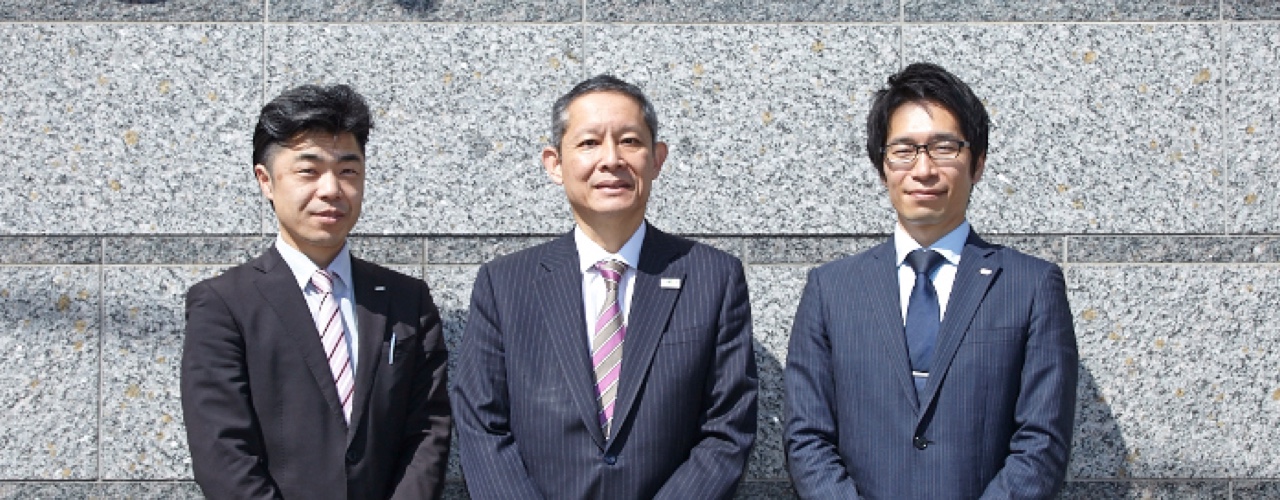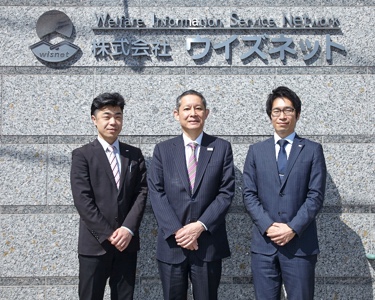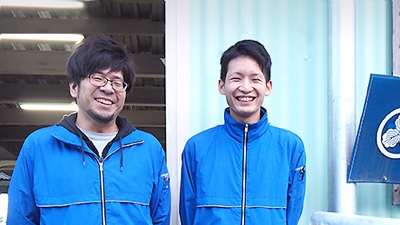Wisnet Co., Ltd. has 20 years of experience providing nursing services like group homes, paid nursing homes, and weekly services on Saitama area. Since becoming a member of ALSOK group in 2016, the Wisnet Co., Ltd. has been providing comprehensive support for residents’ safety issue by enhancing facility security, prevention, and disaster prevention measures beyond nursing services. LINE WORKS has been introduced in order to enhance communication efficiency and speed between headquarters and business office. This time, we have heard from Mr. Yuichi the president of the company, Mr. Takeshi, who is in charge of planning and introducing ICT, and Mr. Kunio, who is in charge of managing business units.
Tell us about your company and individual roles.

Mr. Takeshi:
Our company is a welfare-related business that operated more than 200 nursing facilities and care homes in Saitama, Tokyo, and Kanagawa. I am at the business management department, which mainly focuses on operations management. In our company, there is a System Department and the main job is to manage company network maintenance, nursing fee charge, accounting system planning and management. ICT maintenance has just taken its first step. So, the president Miyazawa asked me to take charge of ICT related planning and implementation. For this reason, I am in charge of the introduction of LINE WORKS.
Mr. Kunio:
Our company is divided into three different headquarters, Saitama, Saikyo and Kanagawa. I am a member of the operations department of the Saikyo Headquarters. There are seven supervisors in the operations department and I work with them to manage about 70 offices in the Saikyo headquarters. Up to this point, we have been communicating mostly by phone or e-mail. There were some employees using their personal LINE accounts. But, due to security policy issues, the company did not recommend using LINE accounts. Whereas, LINE was convenient when you have to contact in a hurry. For this reason, I was worried that I could not ban LINE unconditionally. For example, if you call a sales representative, he or she will not be able to answer the call while that sales representative is driving or with a facility attendance. Even if I send an e-mail, I could not verify whether the receiver has read or not so information was not delivered smoothly. In addition, there were some misunderstandings in the process of one employee delivers a message to another employee like a relay. And sometimes information got lost in the middle so our task was to adapt communication tool that enabled accurate information sharing.
What were the issues before LINE WORKS introduction?
Mr. Takeshi:
Up to this point, we have been communicating mostly by phone or e-mail. There were some employees using their personal LINE accounts. But, due to security policy issues, the company did not recommend using LINE accounts. Whereas, LINE was convenient when you have to contact in a hurry. For this reason, I was worried that I could not ban LINE unconditionally. For example, if you call a sales representative, he or she will not be able to answer the call while that sales representative is driving or with a facility attendance. Even if I send an e-mail, I could not verify whether the receiver has read or not so information was not delivered smoothly. In addition, there were some misunderstandings in the process of one employee delivers a message to another employee like a relay. And sometimes information got lost in the middle so our task was to adapt communication tool that enabled accurate information sharing.
What were the issues before LINE WORKS introduction?
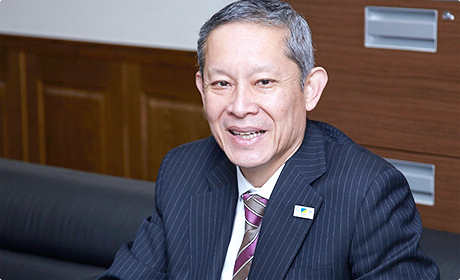
Mr. Yuichi:
The purpose of LINE WORKS was to provide candid communication between the superior and staff member. Employees can get close to someone who has been difficult to communicate with. Before joining ALSOK group, ‘Top-Down’ culture existed in our company because the founder was the CEO. In the nursing business, the most important thing is work done in the field. So, it is our job to listen to the field staffs and make the working condition better. But because I was in the manager position, which is difficult to find our information besides peripheral information. I wanted to hear the real voice on the field.
And, I thought that changing the communication method could reveal how field staffs truly feel about. I also wanted to convey my own thoughts to all my employees. Verbal methods were not delivered information correctly, like a moving game. I believe that LINE WORKS will change the atmosphere of our company so far.
Mr. Takeshi:
While we were providing mobile phones and tablet computers to outside workers like headquarters, manager of headquarters, sales representative and supervisors, we changed mobile phones to smartphones in the fall of 2016. When I was thinking of adopting a more work-friendly chatting tool that can be easily used on smartphones, one of our telecommunications companies introduced LINE WORKS to me. I found this tool was originally made for the company and therefore, security features were well-established. This led me to feel assured about integrating LINE WORKS to our company.Moreover, this tool has the same UI with that of LINE. This implied that there would be no trouble in terms of availability. I made a decision to adopt LINE WORKS after having a conversation with President Miyazawa and we did not have to review the other chatting tools.
How was the introduction of LINE WORKS?
Mr. Takeshi:
As we prepared for the adoption, about five employees, including Mr. Miyazawa and I, used LINE WORKS first and checked manual or application methods. We prepared by organizing the order of use and etc. by the manual. About a month later, we introduced LINE WORKS to 95 employees. Once LINE WORKS fully introduced to employees, we encouraged employees with less activity on LINE WORKS to use more frequently. Employees who do not send messages first or in areas where it is unnecessary to keep in close contact, there may need to make urgent contact through LINE WORKS so it is It is important to encourage employees to understand the information in advance.
How exactly LINE WORKS is being used?
Mr. Takeshi:
Specific use cases for LINE WORKS are daily reporting, contact, and consultation related to work. I think more than 50 percent of the information that I have been sharing by phone or e-mail have been exchanged by LINE WORKS. Not only you can share your work progress at once, but also you can assure that you have confirmed it with ‘read’ sign on message even you did not get a reply. Because message com in text-form, other employees think they don’t have to take notes and this reduced simple verification errors.
Also, I like the fact that you can exchange small talk with LINE WORKS, which is hard to do with computer mail. I also find difficulty facing with my superior but the president Yuichi is actively using stickers in LINE WORKS in order to change the company’s communication in a casual direction.
We also created a group to share supplies. Up to this point, if a single business place had closed and generated large quantities of supplies that had to be disposed of, it had been disposed of as industrial waste. In contrast, if we opened a new business office, we were buying the supplies we needed each time. It was a cost-effective procedure for both the disposal and the purchase. But now on when we get supplies that we don’t need anymore, we post a message to our group chat room, ‘Is there any office needs these supplies?’ to confirm or ‘I’m looking for ○○’ to transfer supplies among business offices. You can attach a photo using LINE WORKS so it is easy to recognize color and size. We are saving at least 10% by eliminating almost no disposal.
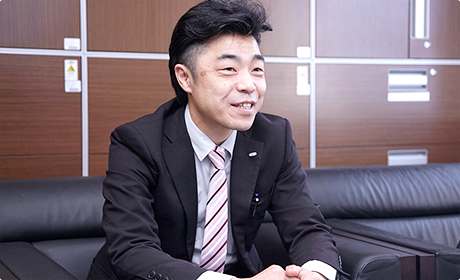
Mr. Kunio:
The nursing field is open 24 hours and 365 days. According to the care insurance policy, the number of employees should be arranged according to the area of the facility or the number of tenants and if there is a vacancy, we need to get help from another facility to make up for it. LINE WORKS is very convenient to communicate in an urgent situation like that.
What are the effects after the introduction of LINE WORKS?
Mr. Kunio:
Nursing field often deals with confidential information like the residents’ personal information. There are things that residents can’t say over the phone because the people around them will be able to hear. Until now, residents have to meet the person in charge face to face in order to figure out what’s going on. After LINE WORKS was introduced, by using personal contact via chat room, it made easier to recognize a situation and instruct orders. ‘Human’ is the core of the nursing business operations so there are human-centered troubles occurred. LINE WORKS improves the precision of communication so it can enable detection and response at an early stage before troubles become more serious.
Mr. Takeshi:
The biggest effect is faster response speed in an emergency situation. A few days ago, we had an infection at one of our offices, and we created a group chatting room to deliver a necessary message to employees who needed to be contacted at once. The one-day response process, such as who would response in the field, preparation of necessary supplies, and checking the nurses’ response, was completed within 10 minutes using LINE WORKS.
Also, the operation of nursing facilities provides the residents an invisible time and space. Nursing staffs have responsibility for supporting residents in a communal life to have a smooth daily routine and for excluding any distraction as soon as possible. In another business perspective, when we have on-day contact related to facility tours or urgent issues from hospital or care managers, it is important to contact rapidly with sales department representatives because it directly related to company’s reliability and sales. With LINE WORKS, employees are able to get in touch and response faster than before.
※ All details, affiliations, and positions specified were gathered at the time of interview.
